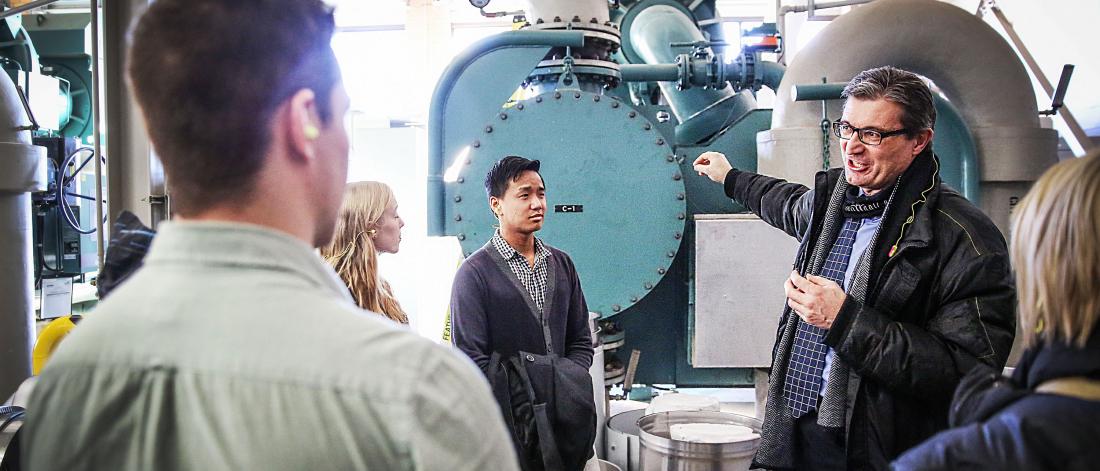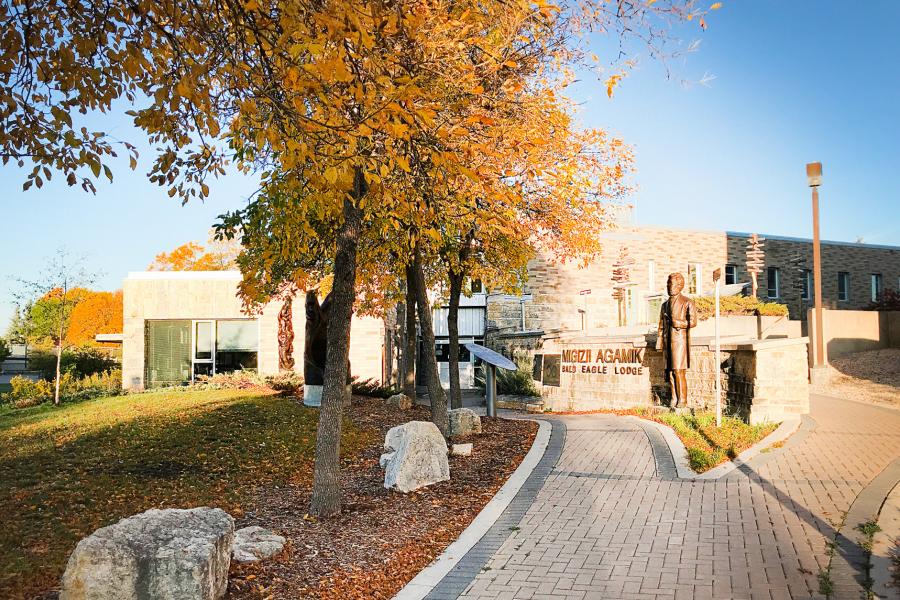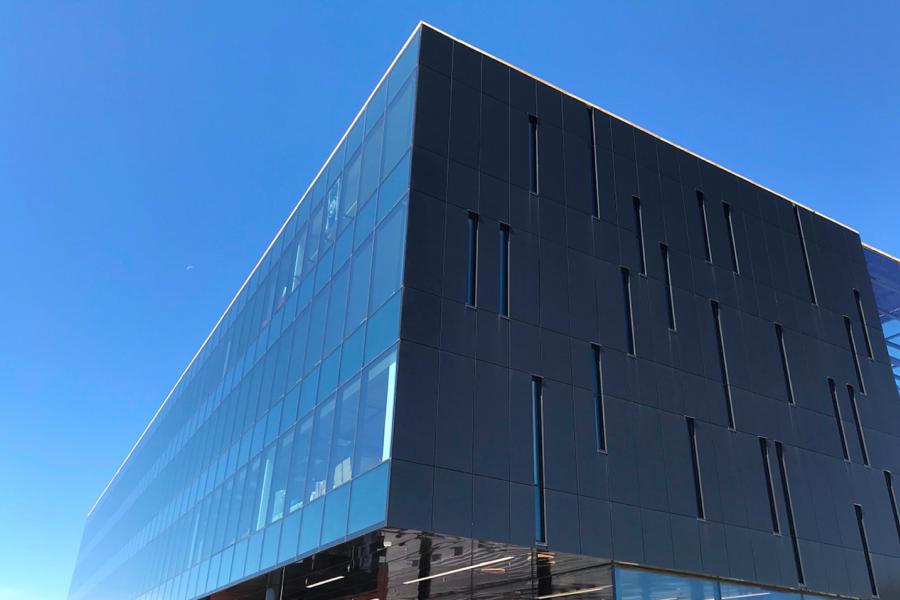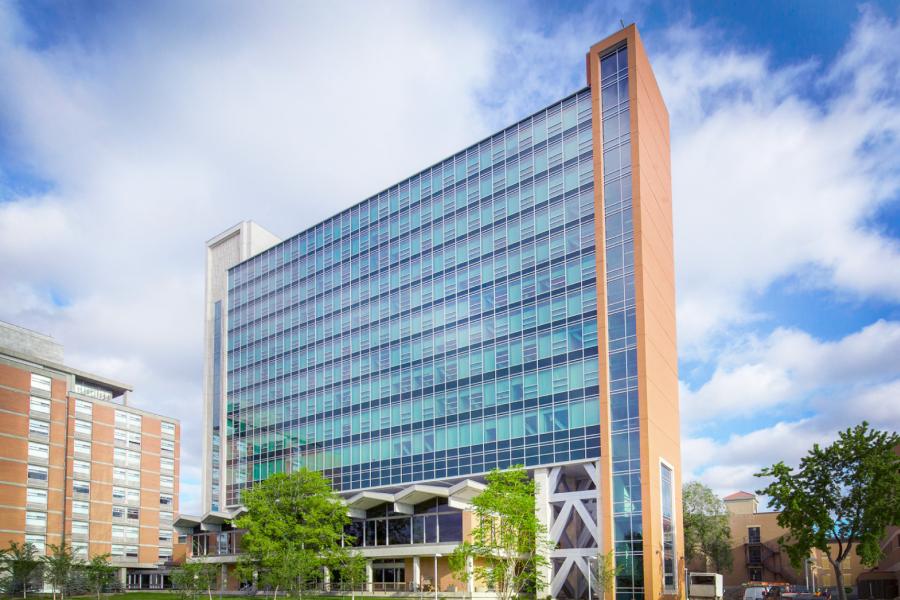- Develop green building and construction guidelines that support long-term sustainable campus development
- Update existing University space policies and develop new space management procedures to ensure physical spaces are being used in an efficient way to minimize new buildings and optimize resource use
- Increase efficiency in the management and procurement of campus fleet vehicles
- Explore Net Zero approaches, methods and technologies in new construction and retrofit projects including the application of renewable energy systems
Energy and water management
Energy and water are essential to university operations to support all work, study and research. All members of the campus community are important in supporting efficient use of energy and water to reduce greenhouse gas emissions.
Managing our utilities, such as electricity and water use, is something all departments, colleges and units play an important role in through awareness and by adopting procedures and practices that reduce consumption.
Energy management
Energy and water are operational essentials that support all work, study, and research. Your actions directly affect the use of energy, water, and ultimately, greenhouse gas emissions. The energy team at the University of Manitoba makes informed choices to minimize the institution’s carbon footprint associated with utilities, with a goal of continuous improvement and ongoing maintenance to reduce operating costs and greenhouse gas emissions.
Green buildings
UM has adopted a LEED Silver rating as the target certification for all new buildings. For both new buildings and renovation projects, all Requests for Proposals (RFP) include a sustainability component, and consultants are required to follow LEED requirements as much as possible. Consultants with LEED accreditation score higher on the RFP.
Here are the green buildings certified under the LEED program.
Greenhouse gas (CO2) emissions
UM has worked to increase new green practices in many aspects of building design, infrastructure, operations and governance to reduce resource demand and improve efficiency. With one of the lowest Energy Use Intensities (EUI) among Canadian universities, UM continually leverages efficiencies within the district heat system. The UM Sustainability Strategy aims to take further action to reduce our institutional greenhouse gas emissions. The strategy commits UM to the following:
-
-
- Create a climate action plan that includes targets for emission reductions, resilience and adaptation, and considers the financial benefits of planning
- Reduce air travel emissions by providing infrastructure, education and support for web-based meetings and conferences, and access to carbon offsets and alternative transportation methods
- Develop and implement a comprehensive energy master plan that considers building level and district energy systems to reduce energy while providing ongoing improvements though target-setting, monitoring and tracking
-
For more information
For more information on our current state of greenhouse gas emissions, read our latest emissions inventory report.

Water management
Effective water resource management includes planning, developing, distributing and managing the optimum use of water resources for all UM campuses. The University of Manitoba is the largest consumer of water in the City of Winnipeg, which means we are continually looking for optimization and improvements to our management system.
-
Here are some major completed projects:
- Replaced over 2,800 fixtures to low-flow or other water conserving devices
- Design standards require all new and retrofit plumbing projects include water conserving fixtures and systems such as low-flow faucets, shower heads and low-capacity toilets
- Water cooled condensers tied to chilled water line
- Water meters to be placed on all new buildings for improved water monitoring
- Retention ponds in Smartpark to hold rain runoff and prevent flooding
-
- Naturalizing many areas with drought-resistant and native prairie plants
- In an effort to reduce waste and promote universal access to potable water, outdated and seldom-used fountains were replaced with new bottle fillers with automatic sensors
- Improved water metering technologies provide Physical Plant with the capacity to monitor actual campus water usage, which results in an estimated savings of $500,000 per year
How you can help
Many sources of information are available on methods and practices for using energy and water efficiently.
Here are some tips everyone can consider.
-
- Turn lights out when you leave rooms unoccupied or in unoccupied rooms that you pass. Encourage others to do the same.
- Turn off or unplug office equipment, laptop computers, monitors and lab equipment, unless in use, especially at night and on weekends. Unplug equipment that is not used frequently.
- Turn off fume hoods and biosafety cabinets when not in use to prevent the loss of conditioned air.
- Close the fume hood sash when not in use to reduce airflow and save energy.
- Adjust the thermostat to save energy when you are away from your office or dorm room for extended periods or vacations (where the thermostat is adjustable). Set to lower temperatures during the winter and warmer settings during the summer.
-
- Avoid the use of once-through water-cooled devices.
- Develop research processes that are efficient and use resources wisely.
- Dress appropriately for each season. Personal heaters and cooling devices are strongly discouraged.
- Choose computer and device power management settings to minimize energy usage.
- Report water leaks to Operations and Maintenance.
- Use LED bulbs in all floor and desk lamps.
- Do not idle fleet vehicles.
Student groups on campus
A number of groups on campus are working on social, environmental or economic sustainability issues. Many have volunteer or membership opportunities. Here are a few that focus on energy and water-related projects.
-
UMEARTH
UMEARTH, the University of Manitoba Efficient and Renewable Technology Hub, is a group of post-secondary students who are passionate about sustainability. Each year, UMEARTH comes together to increase the energy efficiency on campus by organizing sustainability events and completing technical projects.
-
Engineers Without Borders
Engineers Without Borders University of Manitoba Chapter promotes environmental and social sustainability at UM and other developing countries. They are composed of students with different majors (not just Engineering!). Some of their recent projects include promoting fair trade on campus and developmental planning in Africa.







